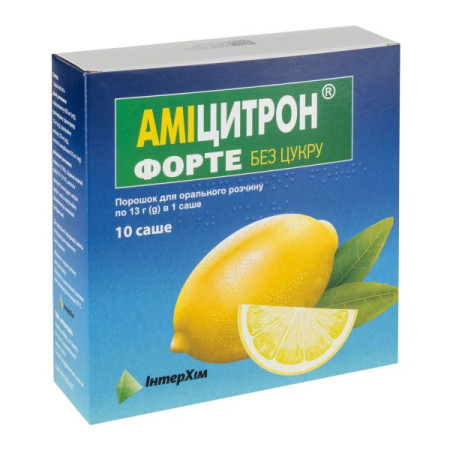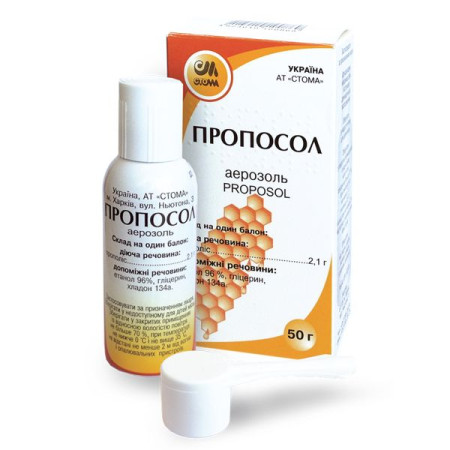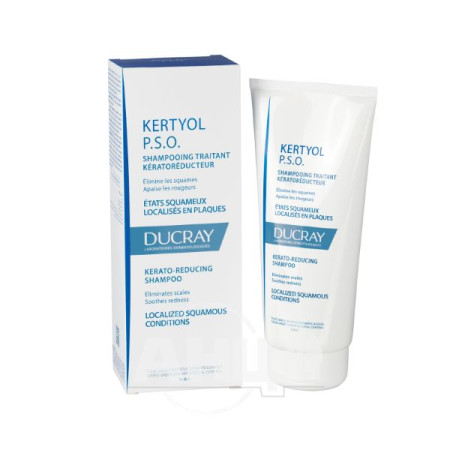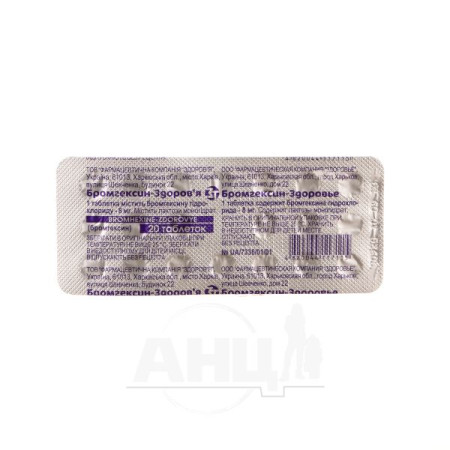Eucalyptus balm for colds Dr. Theiss ointment jar 50 g
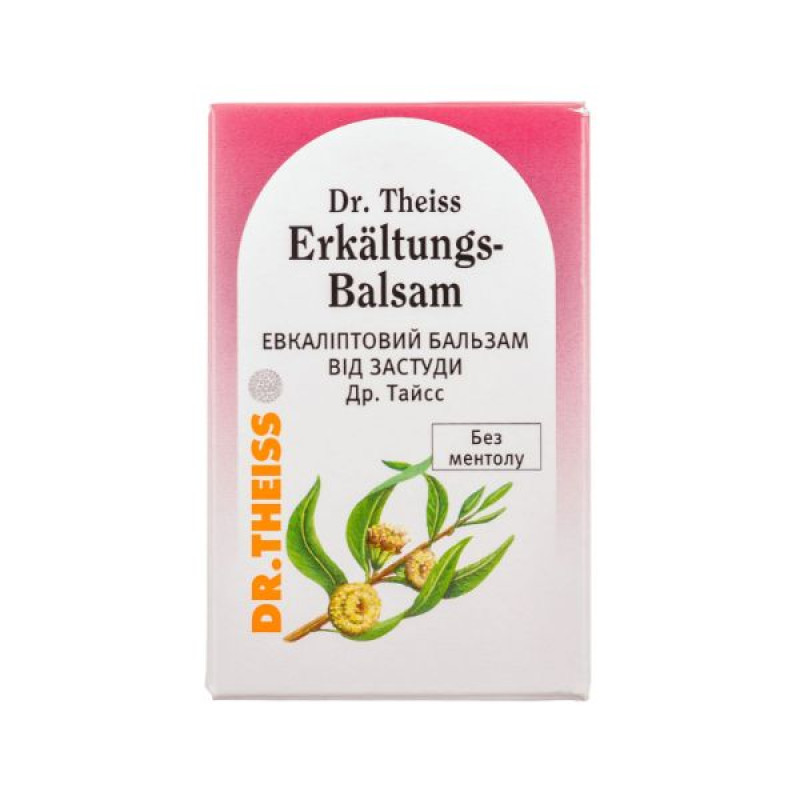
Instructions Eucalyptus balm for colds Dr. Theiss ointment jar 50 g
Composition
active ingredients: eucalyptus oil (Eucalyptus aetheroleum), pine needle oil (Pini silvestris aetheroleum), racemic camphor; 100 g of ointment contains eucalyptus oil (Eucalyptus aetheroleum) 7.5 g, pine needle oil (Pini silvestris aetheroleum) 7.5 g, racemic camphor 5 g;
excipients: corn oil, solid fat, yellow wax.
Dosage form
Ointment.
Main physicochemical properties: homogeneous translucent mass of light yellow color with a characteristic smell of eucalyptus and camphor.
Pharmacotherapeutic group
Drugs used for coughs and colds. ATX code R05X.
Pharmacological properties
Pharmacodynamics.
"Eucalyptus Cold Balm Dr. Theiss" is a herbal medicine with decongestant, expectorant and antibacterial properties. The action of the drug is determined by the components that make up its composition. The vapors of essential oils have a decongestant and secretomotor effect, which reduces the viscosity of sputum and improves its discharge from the respiratory tract. All active substances that make up the drug have a strong antimicrobial effect.
Eucalyptus oil has a decongestant, expectorant and mild antispasmodic effect on the mucous membrane of the respiratory tract. When applied to the skin, eucalyptus oil has a mild local irritant effect.
Camphor, when applied externally, has a decongestant and irritating effect.
Pine needle oil exhibits decongestant and antibacterial properties; it has an irritating effect on the skin.
Pharmacokinetics.
Pharmacokinetic studies have not been conducted.
Indication
Colds of the respiratory tract, accompanied by difficulty in expectorating sputum.
Contraindication
Increased individual sensitivity to the active substances or to any of the excipients.
Bronchial asthma, whooping cough, pseudocroup and other respiratory diseases associated with increased sensitivity of the respiratory tract - since inhalation of the drug can cause spasms of the bronchial muscles; skin diseases (eczema, dermatitis) and childhood diseases with exanthema; skin lesions of various etiologies at the site of application of the drug; tendency to seizures.
Do not use for inhalation in acute inflammation of the respiratory tract and acute pneumonia.
Contraindicated for use: in children under 2.5 years of age, as preparations containing 1,8-cineole, like other essential oils, can cause laryngospasm; in children with a history of seizures (febrile or other).
Interaction with other medicinal products and other types of interactions
Eucalyptus oil enhances the microsomal activity of liver enzymes. Therefore, the effect of other drugs, in particular amidopyrine, amphetamine and phenobarbital, may be weakened and/or reduced. This is not excluded in the case of long-term use and application to large areas of skin.
If it is necessary to use any other medicines at the same time, you should consult a doctor.
Application features
The medicine should only be used externally and for inhalation.
Do not apply to mucous membranes, including the nose and the area around the eyes. Do not apply the product to the face. Apply only to healthy skin.
It is necessary to ensure that children do not touch the areas of skin on which the drug was applied with their hands. After applying the ointment, hands should be washed thoroughly.
If the medicine accidentally gets into the nose or face of children, apnea due to spasm of the glottis (laryngospasm) may occur - this is a condition that requires emergency medical attention.
Cutaneous use in children aged 2.5 to 4 years is not recommended due to lack of sufficient data.
Inhalation is not recommended for children under 12 years of age. Inhalation for school-age children should be carried out under adult supervision.
If shortness of breath, fever, or purulent sputum occurs, you should definitely consult a doctor.
Use during pregnancy or breastfeeding
The safety of the drug during pregnancy or breastfeeding has not been established.
Due to the lack of sufficient data, this drug should not be used during pregnancy or breastfeeding.
Ability to influence reaction speed when driving vehicles or other mechanisms
Studies on the effect on the ability to drive and use machines have not been conducted.
Method of administration and doses
Adults and children over 4 years of age: apply a thin layer to the chest and back 2-3 times a day during the day and before bedtime. To maintain warmth, cover with flannel or woolen cloth or dress warmly.
The duration of treatment is determined by the doctor individually, but on average it is no longer than 3-5 days. If during this period the patient's condition does not improve or shortness of breath, headache, fever, purulent/bloody sputum or nasal discharge appear, it is necessary to urgently consult a doctor.
Children.
Do not use in children under 2.5 years of age. Not recommended for use in children aged 2.5 to 4 years. For inhalation use in children aged 12 years and over.
Overdose
When used correctly in recommended doses, intoxication is practically excluded.
Overdose may cause skin irritation.
Incorrect use.
Accidental internal ingestion of the ointment may cause gastrointestinal upset such as vomiting and diarrhea. Acute poisoning has been observed after significant accidental internal ingestion, with nausea, vomiting, abdominal pain, headache, dizziness, hot flashes, convulsions, respiratory depression, and coma.
In mild cases, discontinuation of the drug is sufficient. Patients with severe gastrointestinal or neurological symptoms of poisoning should be observed and treated symptomatically. Vomiting should not be induced.
Side effects
Possible irritation of the skin and mucous membranes; headache, dizziness, agitation, convulsions.
Cough and bronchospasm may be aggravated. Inhalation (also inhalation of vapours when used externally) may cause symptoms such as wheezing (stridor), shortness of breath (dyspnoea) or narrowing of the airways with difficulty breathing (obstructive dyspnoea). Bronchospasm may occur as a reflex to the use of the medicinal product and, as a result, asthma-like conditions and respiratory arrest.
Isolated cases of hallucinations have been reported. Allergic reactions, contact dermatitis and other hypersensitivity reactions of the skin, such as skin rash, hives, redness and itching of the skin, may occur.
External application to large areas may cause toxic symptoms such as nephrotoxicity, central nervous system disorders (immediately after application of camphor).
If any adverse reactions occur, discontinue use of the drug and consult a doctor.
Expiration date
3 years.
Storage conditions
Store in the original packaging at a temperature not exceeding 25 ºС.
Keep out of reach of children.
Packaging
20 g or 50 g in a glass jar. 1 jar in a cardboard box.
Vacation category
Without a prescription.
Producer
Dr. Theiss Naturwaren GmbH/ Dr. Theiss Naturwaren GmbH.
Address
Michelinstrasse 10, 66424 Homburg, Germany.
There are no reviews for this product.
There are no reviews for this product, be the first to leave your review.
No questions about this product, be the first and ask your question.







